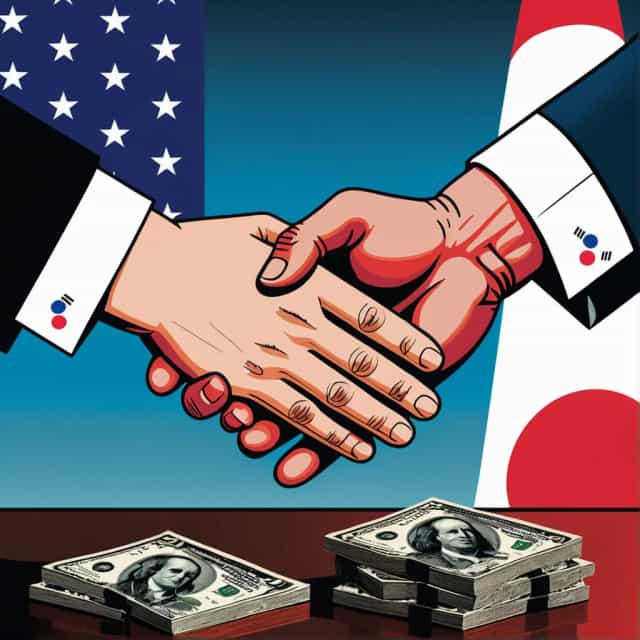
출처: Block Media
Tariffs, Inflation, and Economic Stagnation: Key Insights from the Federal Reserve's Beige Book
The Federal Reserve’s latest Beige Book, released on October 15, sheds light on critical challenges facing the U.S. economy, including inflationary pressures linked to tariffs, economic stagnation, and changing consumer spending behaviors. Drawing qualitative insights from the central bank’s 12 districts, the report provides a comprehensive overview of current economic conditions, highlighting how tariffs and trade tensions are compounding inflationary trends while businesses and consumers struggle to adapt.
Tariffs and Inflation: Direct Impact on Costs and Consumer Prices
A key focal point of the Beige Book is the rising inflation fueled by tariffs imposed during the Trump administration. The report emphasizes that tariffs have significantly increased input costs for businesses, forcing many firms to pass these higher costs onto consumers. The central bank noted, “Price levels increased further over the reporting period,” with widespread reports of elevated costs tied to import duties.
However, businesses have varied in their responses to these higher costs. Certain firms have absorbed the expenses to remain competitive or cater to price-sensitive customers, while others have fully passed these costs onto consumers, amplifying inflation. Additionally, some regions reported lower raw material prices due to weakened demand, partially offsetting the broader inflationary pressures. This dynamic underscores the diverse strategies employed by businesses across sectors to navigate rising costs in a complex economic landscape.
Trade Tensions and Supply Chain Disruptions Add to Economic Strain
The Beige Book also highlights escalating trade frictions, particularly in light of China’s restrictions on exporting rare earth minerals and retaliatory tariff threats from former President Donald Trump. These developments have intensified economic uncertainty and disrupted supply chains, further complicating operations for businesses reliant on global trade. As the U.S. and China remain locked in a protracted trade conflict, the economic fallout continues to reverberate across industries, amplifying inflation and deepening concerns for policymakers.
Stalled Economic Growth and Softening Labor Market Conditions
In addition to inflationary pressures, the Beige Book paints a troubling picture of economic stagnation. Since the previous report in September, overall economic activity has shown “little to no change.” Growth across industries appears sluggish, with no substantial signs of recovery.
The labor market, while described as “broadly stable,” is showing signs of slowdown. Demand for workers has softened across most regions, suggesting that businesses may be exercising caution amid economic uncertainties created by tariffs, inflation, and ongoing trade tensions. While unemployment remains low in certain districts, the report hints at weakening momentum in job creation—a troubling signal for the broader economy.
Government Shutdown Creates Data Blind Spots for Policymakers
The release of the Beige Book coincides with the federal government’s ongoing shutdown, now entering its third week. Key agencies, including the Labor Department and the Commerce Department, remain inactive, creating significant gaps in economic data. This lack of actionable information leaves policymakers with fewer tools to assess and address prevailing economic challenges.
One notable exception is the Bureau of Labor Statistics, which has recalled staff to prepare the delayed Consumer Price Index (CPI) report, scheduled for release on October 24. The CPI, a critical inflation gauge used to adjust Social Security benefits, will serve as a pivotal data point ahead of the Federal Reserve’s Federal Open Market Committee (FOMC) meeting on October 28–29. Policymakers are expected to evaluate this final inflation reading carefully as they navigate decisions that could profoundly impact the trajectory of the U.S. economy.
Consumer Spending Reflects Income Disparities and Price Sensitivities
The Beige Book underscores the nuanced behavior of consumers amid rising prices and economic uncertainty. While high-income households have displayed resilience in their spending, continuing to prioritize luxury goods and travel, middle- and low-income consumers are demonstrating heightened sensitivity to price fluctuations. These households are increasingly focused on discounts, promotions, and cost-saving opportunities, reflecting broader economic pressures and diminishing purchasing power.
The Philadelphia district, in particular, expressed concern over the prolonged government shutdown, noting muted economic optimism and cautious consumer activity. As inflation weighs on budgets and tariffs ripple through the supply chain, economic disparities between income groups are becoming more evident, with middle- and low-income households disproportionately affected.
Implications for Policymakers and the Economy
The Federal Reserve’s Beige Book offers valuable insights into the multifaceted challenges facing the U.S. economy. From tariffs driving inflation to stalled growth and softening labor market conditions, the report paints a picture of an economy grappling with complex domestic and international pressures. The uncertainty exacerbated by trade tensions, government data limitations, and strained consumer sentiment further highlights the precarious position of policymakers as they prepare for the upcoming FOMC meeting.
As the Federal Reserve navigates these uncertain waters, its decisions could prove pivotal in shaping the economic outlook. Addressing inflationary pressures, stabilizing growth, and ensuring equitable outcomes across income groups will require a coordinated and strategic approach, especially in the absence of comprehensive government data. For businesses and consumers alike, staying agile and adapting to shifting conditions will be essential in mitigating the challenges posed by inflation, tariffs, and broader economic unpredictability.










